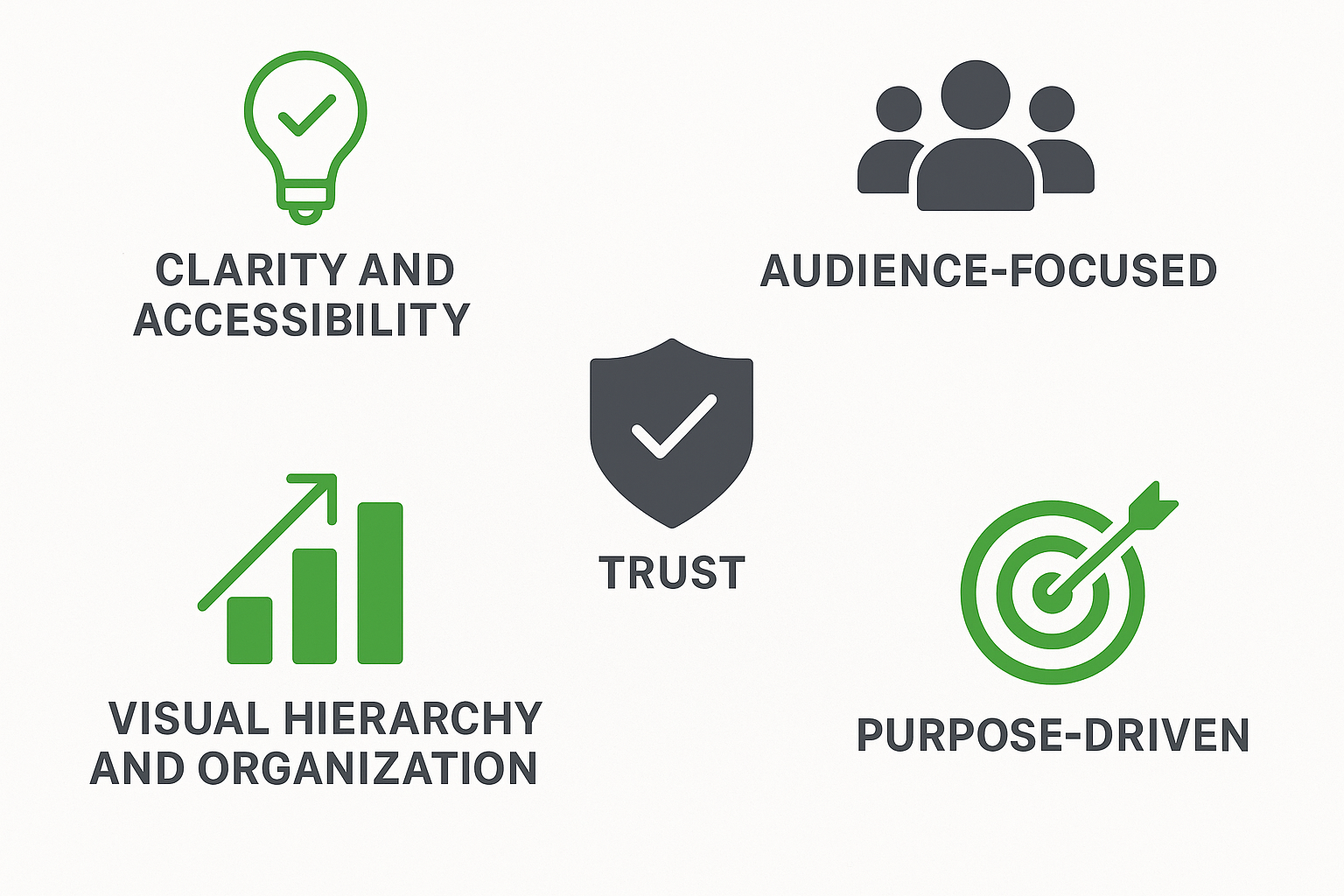
In the context of public involvement projects, I believe good design is purposeful communication: it visually engages the audience, builds trust and empowers informed participation from the public.
With more than 15 years of experience across branding, strategy and design — spanning both print and digital platforms — I’ve seen firsthand how thoughtful design can elevate even the most complex or technical content. Whether working with municipalities, universities or major consumer brands, my approach always centers around clarity, empathy and impact.

Here’s a more detailed breakdown of my approach:
1. Clarity and Accessibility
Good design makes information understandable to as many people as possible, including those with limited literacy, language barriers or disabilities. This means following established brand standards (or creating them when needed), using clean typography, establishing high-contrast color palettes, utilizing intentional layouts that remove friction and overall making content easier to absorb.
2. Audience-Focused
Design should reflect a deep understanding of the people it serves. That includes being culturally relevant, emotionally resonant and linguistically accessible. Whether the tone is warm and inviting or direct and informative, good design helps people feel seen and respected — drawing them into materials that feel tailored, not generic.
3. Visual Hierarchy and Organization
A strong visual system uses scale, contrast, spacing and color to guide the eye. This is especially important in civic and technical communication, where the content may be complex or layered. Design should help people quickly find what they need, understand what they’re seeing and know what action (if any) is being asked of them.
4. Trust
Professional, consistent design reinforces an organization’s credibility. When materials are aligned with brand values and executed with care, it signals transparency and reliability — critical qualities in public engagement. Trust isn’t just a result of what we say, but how we show up visually.
5. Purpose-Driven
Design is not decoration; it’s problem-solving. Whether the goal is to educate, invite feedback, explain a process or make a call to action, each visual choice should serve that goal. Design with intention always has more impact than design for aesthetics alone.
Good design helps people understand, trust and want to participate. It’s the bridge between information and action — and when done well, it ensures that more people feel invited into the conversation.
